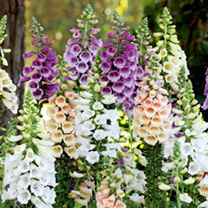June is the month of transition between spring and summer and brings with it the June gap. A month of long days, balmy nights and hopefully plenty of glorious sunshine. For these reasons, it is the month most chosen for weddings. Yet, it is not the month most favoured by either gardeners or bee keepers. Why? Because of the June Gap.
In April and May not only spring flowers but also trees and hedgerows are dripping with pollen and nectar. Spring is a time for strong colour in our gardens and is also a period of feasting for bees.
Yet come June the spring flowers have faded and the first blooms of summer are still to appear. This is a natural period of limbo when our gardens are still beautiful, with different shades of greens, yet very short on nectar producing flowers. Even the grass is conspiring against the bees as it has grown. Leave it long and it swamps any nectar producing wild flowers yet cut it and you cut the wild flowers too!
So, if you want your garden to be attractive and helpful to wildlife, including bees then here’s some suggestions of nectar producing plants that will help to fill the June gap. Not only will the bees be grateful for them but they will add colour to the garden and break up all that lovely green!
June Flowers
Single open flowered roses – such as the Dog Rose
Foxgloves – they don’t have to be pink. Wild foxgloves are pink but for the garden you can chose from many colours ranging from white to blue. Foxglove Pam’s Split is particularly attractive – not just to bees!
Hardy Geraniums – these come in many colours and although they provide excellent groundcover they will also bloom well in pots.
Ox-eye Daisies – a striking white wildflower. Also a potential thug that will need controlling if you don’t want it spreading everywhere.
Various flowering herbs – including borage, rosemary, thyme and chives. The bright blue nodding heads of borage will act as a magnet for bees.
The good news is that the June Gap only lasts about two weeks, then the summer flowers will burst into bloom.


